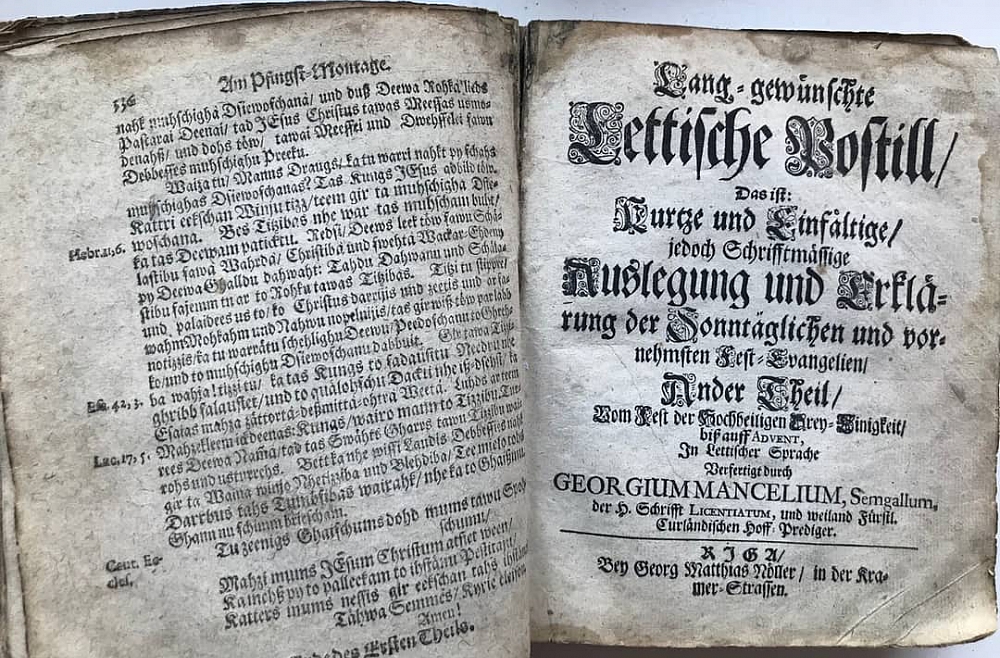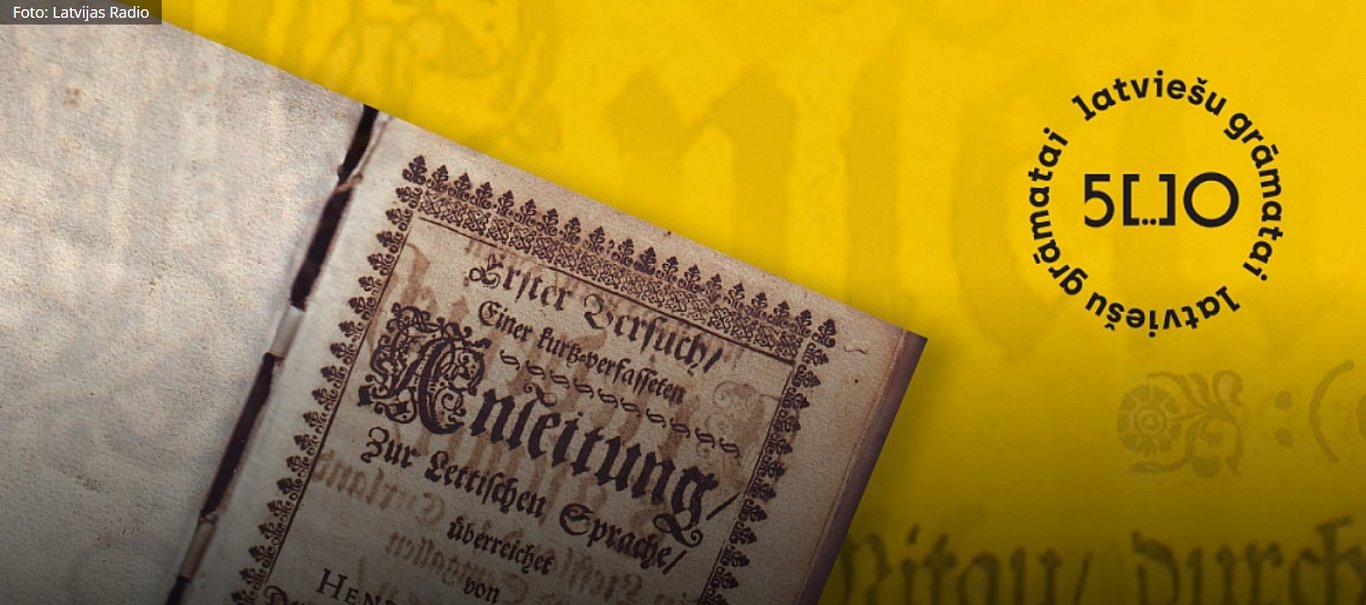More about the cycle of events can be discovered at the website https://www.gramatai500.lv and for more about the Latvian National Library and its constantly changing exhibitions and collections, visit: https://www.lnb.lv/.
The contribution of pastors Georg Mancelius and Christoph Fürecker – founding fathers of Latvian written language
The language of a nation is an essential part of its identity. This is first and foremost understood as the form of language developed and used in writing. Language is often the focus of attention of society, or at least of its most upstanding members, especially in times of national revival, state formation and stabilisation, as well as in times of turmoil.
The cultural history of nations has always paid tribute to those who helped develop and maintain the national language. Such persons are also well known in the history of the Latvian nation. It is important to acknowledge that in the early period of our written language, until the middle of the 19th century, almost all of those who developed the Latvian language were not Latvians, but from the clergy and were of German origin.
The Latvian authors of 16th-century manuscripts are largely unknown to us, sometimes we only know their names, perhaps a few biographical fragments, but in the 17th century the first notable activists have been documented. Therefore, the history of our language at this time is no longer anonymous, but to a large extent linked to the activities of these people.
Two men stand out in the first half and middle of the 17th century, without whose contribution the Latvian language as we use it today in our written and spoken language would certainly look quite different. These men are Georg Mancelius (1593–1654) and Christoph (also called Christophor) Fürecker (c. 1612–ca. 1685). Both were born in Semigallia – Mancelius came from Mežmuiža (now Augstkalne), Fürecker from Nereta. Both were raised in pastors’ families and both had spent some time in Tartu. Mancelis was a parish priest and teacher at the gymnasium, and later at the university there, while Fürecker was a student.
Their later lives, however, turned out to be quite different. Mancelius leaves Tartu and becomes the court pastor of the Duke of Courland, while Fürecker returns to the Duchy after a short period of study in Leiden and does not become a parish priest. There is evidence that he was a private tutor for some time, teaching Latvian to Heinrich Adolphi (1622–1686), later the superintendent of Courland.
In several respects, the work of both can be described as a "first". Mancelius compiled the first German-Latvian dictionary "Lettus" with the thematic section "Phraseologia Lettica" and ten sample conversations (1638). This can also be considered the first textbook of the Latvian language. He also produced the first original prose texts in Latvian, the aforementioned ten conversations, as well as an extensive book of sermons: Lang-gewünschte Lettische Postill [Long-awaited Latvian sermons] in three parts (1654). Fürecker compiled the first Latvian-German dictionary, which, although it remains in manuscript form, influenced the authors of subsequent dictionaries.

The sermon book Lang-gewünschte Lettische Postill (1699 edition)
Mancelius and Fürecker are important not only as trailblazers in the history of Latvian language and culture. They contributed to significant turning points in this field. With Mancelius' writings, the middle Semigallic dialects became established as the basis of the language, word endings and vowel lengths were marked more accurately, and new terms were introduced for such peculiar Latvian sounds as ļ, ņ, ŗ. Fürecker added to these improvements the signs for the consonants g, ķ, and proposed that long vowels, like the previously mentioned consonants, be marked with a strikethrough.
The latter suggestion seems too radical to his contemporaries, so it is not adopted. Fürecker is also the first to use a caron over a vowel with a locative ending. These innovations that were introduced by Mancelius and Fürecker, together with minor refinements at the end of the 17th century and in the second half of the 19th century, were used in Latvian writing until so-called old orthography was phased out in the middle of the 20th century.
A description of the grammar of the Latvian language is also Fürecker's legacy, published by Adolphius as "Erster Versuch Einer kurtz-verfasseten Anleitung zur Lettischen Sprache" [First attempt at a concise guide to the Latvian language] (1685). Fürecker is also mentioned as an important translator of Latvian hymns (more than 180) and the founder of Latvian poetic traditions.
The fate of the work of the two 17th-century men of faith is not identical. Mancelius' book of sermons was reprinted five more times until 1823, the dictionary was incorporated into the subsequent works of Latvian lexicographers, but the other works did not survive past the 17th century. Fürecker’s linguistic ideas were taken up in 18th-century and later Latvian grammars, his collected vocabulary was included in the dictionaries of authors in subsequent centuries, and his translations of Gospel passages via Ernst Glück’s Bible translation (1685–1694) reached into the 20th century.
Fürecker's poetry has continued to be popular to this day. His Latvian translations of "Dievs Kungs ir mūsu stiprā pils” [A Mighty Fortress is our God]", "No debesīm es atnesu” [From Heaven Above to Earth I Come], "Lai slava Dievam ir un gods” [All Glory be to God on High] (in the older version "Gods lai ir Dievam augstībā” [Glory be to God in the Highest]) are still heard in the Lutheran Church today. The latest edition of the hymnbook contains more than 30 hymns by Fürecker!
Looking back in our history, we can see that the contribution of Mancelius and Fürecker is one of the cornerstones of the Latvian written language. Therefore, for as long as we care about our language, we will honour and respect the memory of these two great Semigallians.



























